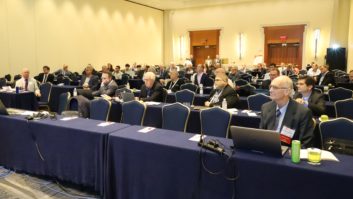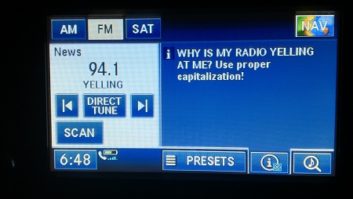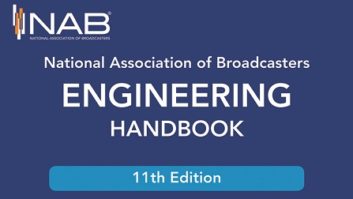Multicasting, digital, Cat5, bandwidth, AES, IBOC…these are a few of the terms that have changed our industry. How it works and how we get there is the question.
How does it work? Analog and digital and text data is sent from the studio to the transmitter, like before, only different. Your transmitter transmits the signal, like before, only different. The receiver picks up the signal from the air, like before, only different. The program transport system now presents the things that were not there in analog.
Right from the start, we see that work needs to be done at the studio, the STL and at the transmitter to make digital happen. Starting at the studio, where you had an analog signal path, do you rebuild your studio plant for full AES digital, or do you just leave everything as is and convert from A to D before you hit your STL?
Since most of the plants that were in place in the 1990s are getting older, the best bet is to rebuild to a fully digital plant. Running Cat5 cable is a lot easier than the old audio pairs and fewer cables are needed. At the studio you also need AES distribution amps, proper grounding, elimination of many sample rate converters, UPS, etc. Since there is a delay in the digital signal, no more over-the-air monitoring is practical. A separate processed headphone/monitor feed makes it easier to appease the ‘air talent’ and makes it easier on the engineering department.
“Rebuilding to deal with AES and high quality STL links, although costly in front, makes it much easier to transition to digital,” said Richard Koziol, president, Peak Communications. In New York City, where all of the AM stations are in New Jersey, across state lines, it is much easier to install at 5.8 GHz STL, than dealing with two telephone companies. Koziol said: “once you install the STL path, you eliminate the recurring monthly costs for telco lines, and the inherent ongoing maintenance problems.”
Jim Stagnitto, CE of WWPR Radio, Clear Channel, New York City, said: “Make certain you eliminate the clipping, have a brick-wall limiter before the A/D converter and you are off and running.”
“Your analog audio better be clean,” said Tom Ray, VP/Corporate Director of Engineers for WOR/Buckley, “An HD codec on AM will grunge it up in a real hurry.”
At the transmitter site, in addition to a new transmitter to handle the digital signal, you need to make certain that you have adequate air conditioning to handle the additional heat load and adequate electric power for the digital transmitter. The digital signal can be injected in an existing transmitter at high level, if you have the capacity in the transmitter and at low level with a separate transmitter. The antenna system must be checked to make certain that there is linearity across the full bandwidth. Optimization may be necessary. Considerations should be made to change the RF system at the transmitter for a new combiner and transmission line runs. Careful planning at the beginning eliminates heartaches during the rebuild.
The costs associated with a digital conversion can vary greatly depending on your plant. Major studio and transmitter rebuilds can be costly. If your antenna system will handle the digital signal as is, you are way ahead of the game. On the AM side, good shape equals low cost; bad shape means a quick escalation of price. On the FM side, the studio installation is much less than analog, but the transmitter for high-level combining could cost more than $100,000 to accomplish. The digital transport medium…the STL…will be a medium cost item, but once operating, maintenance and recurring costs are eliminated.
These are some of the challenges that the broadcast engineer of today faces as the technology moves forward. Program transport from the days of a turntable feeding a console into some processing through telephone lines to the transmitter has come a long way. Digital transport is here to stay, so you better be ready.












